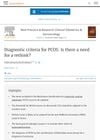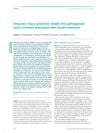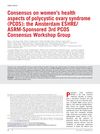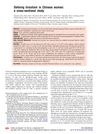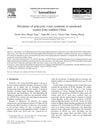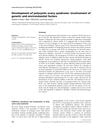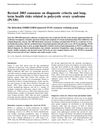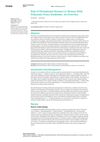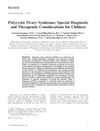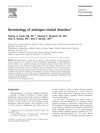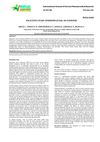PCOS: Update and Diagnostic Approach
September 2018
in “
Clinical Biochemistry
”
Polycystic Ovary Syndrome PCOS insulin resistance hyperandrogenism Rotterdam criteria prenatal androgen exposure anti-Müllerian hormone genetic predisposition epigenetics microRNAs oligo/anovulation clinical hyperandrogenism biological hyperandrogenism polycystic ovarian morphology metabolic syndrome cardiovascular diseases high male hormones high AMH irregular ovulation polycystic ovaries heart diseases
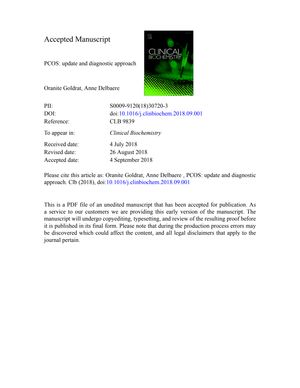
TLDR The document concludes that more research is needed to fully understand the causes of PCOS.
The document from December 2018 provides an update on Polycystic Ovary Syndrome (PCOS), emphasizing its complex nature, varying diagnostic criteria, and the influence of genetic and environmental factors on its development. PCOS is a prevalent endocrine disorder with a range of 5% to 15% among women and is characterized by insulin resistance and hyperandrogenism. The Rotterdam criteria identify four different PCOS phenotypes, which have different metabolic and fertility implications. The document highlights the role of prenatal androgen exposure and high anti-Müllerian hormone levels in the development of PCOS, as well as the genetic predisposition shown by familial clustering and higher concordance in identical twins. Genome-wide association studies have identified several candidate genes associated with PCOS, and the document also notes the potential role of epigenetics and microRNAs, although findings are not yet conclusive. Diagnostic criteria for PCOS include symptoms of oligo/anovulation, clinical and biological hyperandrogenism, and polycystic ovarian morphology, with recommendations for specific thresholds for follicle count and ovarian volume. Screening for metabolic syndrome is advised due to the associated risk of cardiovascular diseases. Despite advances in understanding the genetic basis and metabolic disturbances of PCOS, the document concludes that more research is needed to fully understand its etiology.

